| Photography and Collecting: Lures, Lights and Sheets
|
|
|
| Heading |
In the rightmost photo below you see Bob Belmont
examining moths in his walk-in light trap behind his moth lab in
Stanford, Florida. There is a funnel installed through the roof below
the light fixture which combines MV and blacklights. The screened
enclosure can be smaller or larger than shown here. I will later add a
photo of one in my yard where the srceening encloses a space of 8 ft. x
8 ft. One advantage to this type of live trapping is that it avoids the
possibility of moths being worn or crushed when beetles are the dominant
insect being trapped. The enclosure can be opened to release all of the
insects.
|
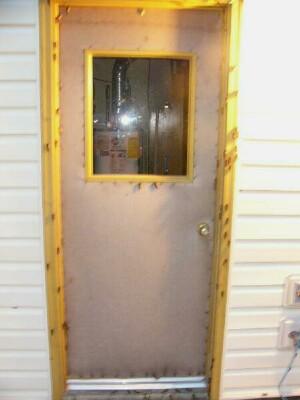 © Robert
Patterson - MD -- 05/11/2004 © Robert
Patterson - MD -- 05/11/2004
|
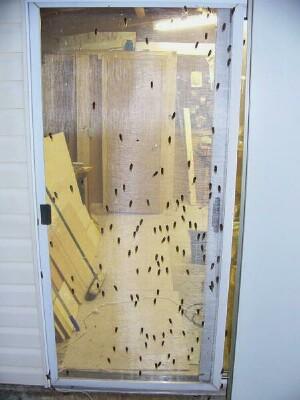 © Robert
Patterson -- MD -- 05/22/2004 © Robert
Patterson -- MD -- 05/22/2004
|
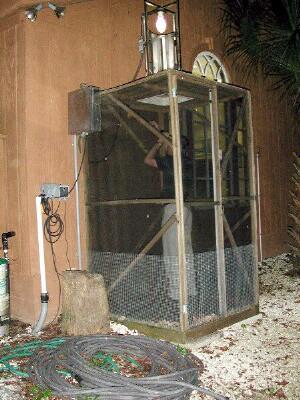 © Bob Belmont --
FL -- February 2005 © Bob Belmont --
FL -- February 2005
| |
One hazard for moth photography will not, at least at
my house, recur again until 2021. That is the invasion of the Periodical
Cicada that took place in 2004. In photos above you can see the
abandoned pupal skins of cicadas that emerged mainly on the wood
moldings surrounding my side door. Later, the adult cicadas were
attracted to my lights during the last four nights of their adult
existence. I had to use a broom to sweep them off the screen door before
entering my work room (within which you can see my small photography
room that I call the Moth Lounge.
|
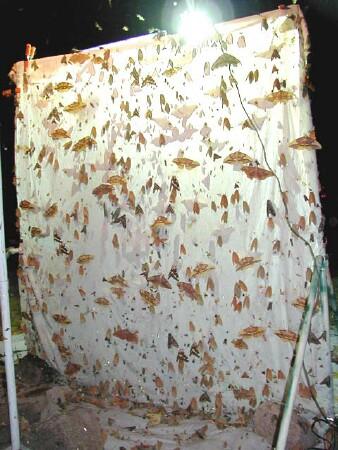 ©
Howard Byrne - AZ (courtesy of Bruce Walsh) ©
Howard Byrne - AZ (courtesy of Bruce Walsh)
|
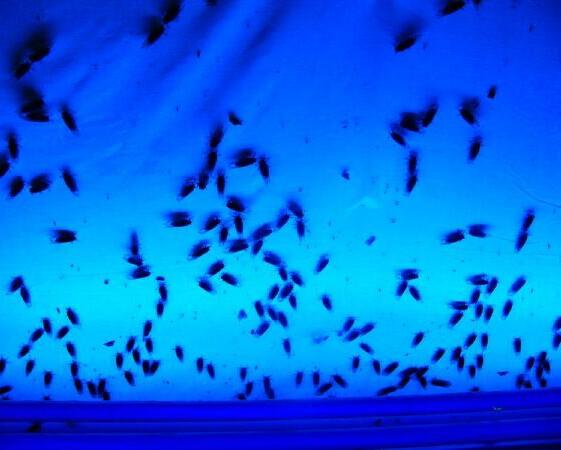 © Robert Patterson - MD -- 05/22/2004 © Robert Patterson - MD -- 05/22/2004
| |
In Howard Byrne's photo from Arizona you can see the
amazing abundance of moths that might be attracted, in a prime area, to
a sheet arranged as a resting place near an MV light. With some cameras
it is possible to photograph moths at rest on a sheet. My camera is not
sufficiently capable for doing this, the coloration of the moths being
substantially altered by either MV or blacklight. You can see such
discoloration in my photo of a cicada night at my blacklighted sheet in
my side yard. At the bottom of the photo you might be barely able to
make out the 4-ft. fluorescent fixture and one of the blacklight tubes.
To my eye the scene was quite different, but I could not adjust my
camera to avoid what you see. Hence, I capture moths that I wish to
photograph and take them indoors where I can control the lighting to my
satisfaction. In the two photos below I was able to get decent photos by
turning off the MV light and using the camera's flash. At left an adult
cicada has just emerged from its pupal skin. At right is one that has
finished "coloring up" and is about ready to fly away.
|
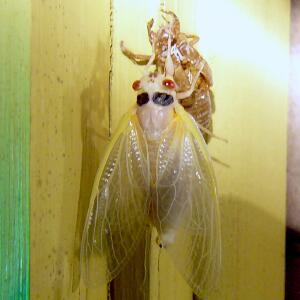 ©
Robert Patterson - MD -- 05/11/2004 ©
Robert Patterson - MD -- 05/11/2004
|
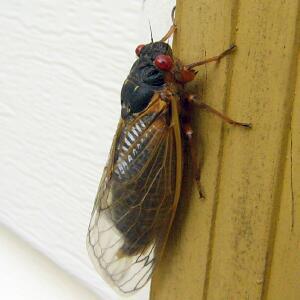 ©
Robert Patterson - MD -- 05/11/2004 ©
Robert Patterson - MD -- 05/11/2004
| |
|
|